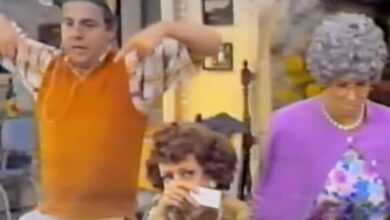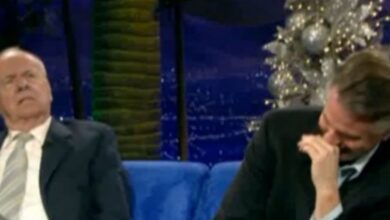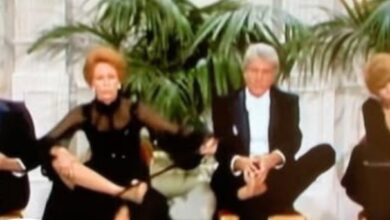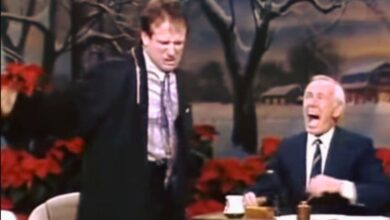Tim Conway’s legendary “Dr. Nose” meltdown — the unscripted chaos that shattered live television
THE MOMENT TV LOST CONTROL — Tim Conway Destroys the “Dr. Nose” Sketch With One Rogue Improvised Move, Sending Harvey Korman Into a Meltdown No One Could Stop! What began as a calm, straight-faced medical scene instantly detonated into chaos the second Conway abandoned the script, unleashing a storm of unpredictable jokes, wild expressions, and perfectly timed nonsense.
What makes this moment so legendary is how quickly the sketch spiraled out of professionalism and into pure comedic freefall. Tim Conway had a gift for waiting until everyone else committed to the scene, then detonating it with a single absurd choice. During “Dr. Nose,” that choice came in the form of a bizarre, unplanned gesture that instantly wiped the seriousness off Harvey Korman’s face. The audience could feel the tension break — and from there, Conway never let the moment recover.
Harvey Korman, one of the greatest straight-men in comedy history, tried desperately to maintain composure. He pressed his lips together, looked away, even tried to bury his face in a prop chart. But Conway kept leaning into the chaos, adding stranger expressions, odder pauses, and whispers so random that the cast had no chance of recovering. It wasn’t just a sketch anymore — it was Conway turning the stage into his playground.
As the laughter grew, Conway doubled down. His improvisation became more mischievous, as if he could sense that breaking Korman was now the entire purpose of the scene. Each new unpredictable move hit harder than the last, and Harvey entered that iconic Korman-laugh — the uncontrollable, breathless, body-shaking meltdown that meant the sketch was officially doomed.
The crew behind the cameras were fighting to stay silent, shoulders shaking as they tried to keep their mics still. Carol Burnett herself, watching from offstage, struggled to keep from collapsing. Everyone knew they were witnessing something totally unrehearsed, completely unplanned, and instantly unforgettable.
Conway had a rare ability to derail a scene without ever being mean-spirited. Everything he did came from pure comedic instinct — the kind that can’t be scripted, taught, or duplicated. The more Korman tried to pull himself together, the more Conway intensified the chaos, creating a hilarious feedback loop of disaster. For viewers at home, it felt like watching a building collapse in slow motion, except no one wanted it to stop.
The brilliance of the moment lies in its simplicity: one actor going off-script, another trying not to break, and an entire cast collapsing in the background. Conway didn’t need big jokes or elaborate pranks — just a twitch of his mouth or a whispered comment, delivered at the worst possible moment for his co-stars.
As the sketch continued, the set itself seemed to become part of the comedy. Prop tables shook from laughter. Staff could be heard stifling giggles. Even the studio lights seemed to flicker with the ridiculousness of the moment. Every second of it felt like watching live TV come unglued in the most beautiful way.
The audience erupted louder with each new improvisation. They weren’t just laughing at the joke — they were laughing at the collapse of professionalism on display. It was comedy stripped down to its purest form: chaotic, spontaneous, and entirely human. Conway’s genius was that he never looked like he was trying too hard; he simply allowed chaos to bloom around him.
By the time the sketch staggered toward its ending, no one — not even Conway — seemed able to maintain control. The cast was in tears, props were out of place, and Korman was leaning against furniture for support as he dissolved into laughter yet again. It’s rare for a sketch to collapse so completely yet remain so iconic.
Even today, people revisit the clip not to see the joke itself, but to watch the destruction. It’s the kind of comedic moment that reminds viewers why live television can be magic — unpredictable, fragile, and unrepeatable. Conway didn’t just deliver lines; he weaponized silence, timing, and absurdity.
Decades later, fans still refer to it as one of the greatest unscripted disasters in comedy history. It wasn’t polished. It wasn’t rehearsed. It wasn’t even intended. But it was perfect. The Carol Burnett Show was already known for letting actors break, but this sketch set a new standard — the night the cast surrendered completely to Tim Conway’s genius.
In the years since, countless comedians have studied that moment, trying to understand how Conway wielded such devastating comedic power with such gentle delivery. Yet no one has replicated it. It was lightning in a bottle, captured on live TV.
And in that flash of chaos — that eruption of laughter, that unstoppable meltdown — television truly broke. Tim Conway didn’t just derail a scene; he rewrote what a sketch could be. He turned “Dr. Nose” into a masterclass in improvisation, spontaneity, and joyful destruction.
The result is a moment that still makes audiences howl decades later — proof that sometimes, the greatest comedy comes from the moments that were never supposed to happen at all.





